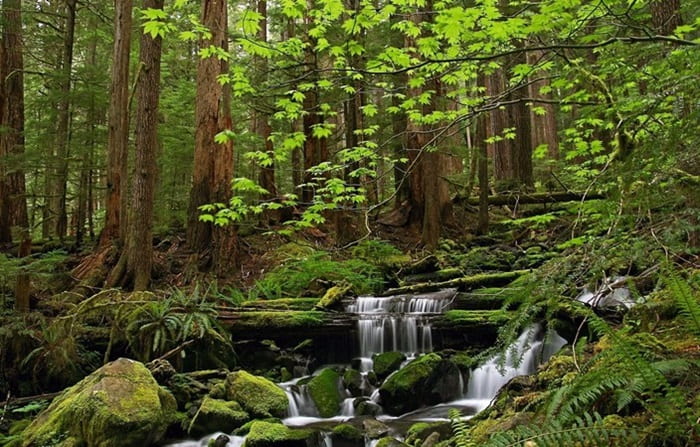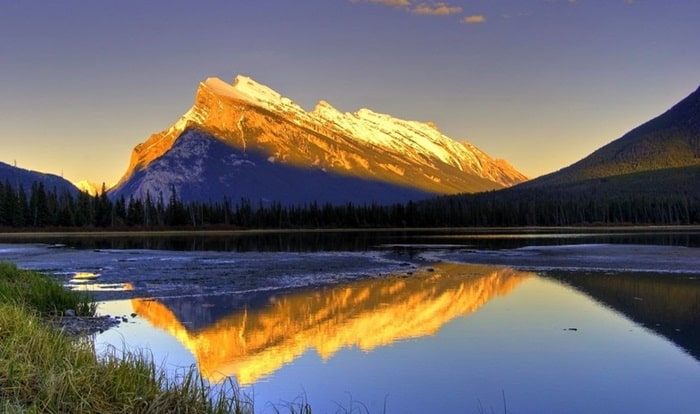We have all most likely seen those breathtaking images of snow-capped mountains, large deserts, or calm lakes that simply astounds you. But what gives those images such force and appeal?
Landscape photography goes beyond just pointing your camera at a beautiful scene and taking a shot. Not at all; rather, it is far more. It’s about distilling the core, atmosphere, and beauty of a place such that they inspire a particular feeling or narrative may be told.
Whether you’re sitting by the beach at sunset or on a mountain walk, you’re trying to capture that moment in time and bring it to life for others to see—even if they weren’t with you.
The fact that nature is continually changing adds even more thrill. The terrain is continuously changed by the light, temperature, and seasons, thereby providing an infinite canvas for your art.
And it is where one finds their creativity! It’s about turning a simple photo into a masterwork combining composition, lighting, and technique so that people remark, “Wow, I feel like I’m there!”.
What is Landscape Photography?
Capturing broad, beautiful views of nature is essentially the artistic endeavour of landscape photography. Consider those amazing images of broad plains, tall mountains, undulating hills, or large oceans.
Whether you are catching the calm quiet of a landscape or its raw, wild energy, the goal here is to really highlight the beauty of the natural world.
But it’s about your frame of view as much as it is about what you perceive. In landscape photography, composition rules most everything. A well-crafted shot can transform the mood of a picture from “meh” to “wow!”.
Perhaps you like to highlight the magnificence of a whole mountain range, or perhaps you wish to concentrate on one, magnificent tree in a field. Landscape photography is incredibly artistic and enjoyable depending on how you frame that shot!
One of the nice aspects of landscape photography is its great adaptability. You may zoom in and concentrate on the minute things people would overlook—like the patterns on a rock or the way the sunshine strikes a leaf just right—or you can capture endless panoramas.
One also has to consider the illumination. This is quite significant! Landscape photography depends much on natural light. Early mornings and late afternoons—what photographers sometimes refer to as the “golden hour” are ideal for catching soft, warm light that renders everything looking wonderful.
Conversely, clouds can provide diffused, uniform illumination ideal for avoiding strong shadows. Every condition offers something unique, and part of the enjoyment is learning how to deal with whatever Mother Nature presents.
Therefore, landscape photography allows you the opportunity to explore the planet in a whole new way, whether your inclination is for the tough beauty of cliffs and roaring waves or the serene tranquilly of a still lake at daybreak.
It’s about the trip of getting the ideal photo as much as the destination. And believe me; once you start it, the surroundings seem to get much more fascinating!
Tips for Improving Your Landscape Photography Compositions
1. Use Plant Life to Frame Your Shot
Ever wondered why some landscape photos just have that ‘wow’ factor? Well, one of the secrets is framing.

Framing is all about using elements in the foreground, like trees, bushes, or other plant life, to naturally guide the viewer’s attention to the main subject in the background, whether that’s a towering mountain, a waterfall, or some wildlife.
Imagine this: You’re standing in a forest, and there’s this amazing mountain in the distance. Now, instead of just taking a straight shot of the mountain, you could use the trees around you to frame the mountain, giving your photo depth and a more balanced composition.
Trees, leaves, and branches are awesome for this because they not only add to the scenery but also create a sense of context, like you’re peeking through a natural window to something even grander in the distance.
Don’t be afraid to play around with different angles, either. Move closer or farther from the plants and see how they change the overall vibe of your shot.
Sometimes a subtle framing can make a huge difference in how your landscape is perceived!
2. Add Depth by Including a Vanishing Point
A vanishing point is a fantastic way to do this. It’s that spot where two parallel lines, like a road or a river, seem to meet in the distance, creating a sense of depth and distance.

It’s a classic technique used in both photography and painting to draw the viewer’s eye deeper into the image.
Picture this: You’re standing on a long, winding road that stretches off into the horizon. By positioning the road so that it leads towards a vanishing point in your photo, you create this natural pull that draws the viewer’s eyes straight into the heart of the scene.
It’s like you’re inviting them to take a journey through your photo, from foreground to background.
Using a vanishing point not only adds drama to your composition but also gives it a sense of scale. It makes the scene feel bigger, more dynamic, and full of life.
So next time you’re out shooting landscapes, keep an eye out for roads, rivers, or even rows of trees that could create that perfect vanishing point.
3. Add Ethereal Majesty by Experimenting with Reflections

Reflections are another magical tool you can use to elevate your landscape photography. There’s something so serene and otherworldly about a perfectly reflected scene, whether it’s mountains mirrored in a lake or the sky reflected in a still pond.
Now, you might’ve heard that centering your subject can make for a boring composition, but reflections are one of those beautiful exceptions to the rule. By placing the horizon line right in the middle of your shot, you can create a symmetrical image where the reflection mirrors the sky or landscape above.
This creates a feeling of calmness and balance, almost like the scene is floating in another realm.
But don’t stop at just centering the reflection. Experiment with different angles, distances, and lighting conditions to see how the reflection changes.
Early morning or late afternoon light, especially during golden hour, can give you that soft, ethereal glow that takes your photo to the next level. The key here is to have fun and try new things—reflections can be incredibly versatile and offer endless creative opportunities!
4. Realize that Diagonal Lines Add Visual Interest
Want to add some energy and movement to your landscape compositions? Diagonal lines are your best friend! Unlike horizontal or vertical lines, diagonals create a sense of motion and direction, pulling the viewer’s eye along the line and deeper into the scene.
You can find diagonal lines everywhere in nature—rivers, mountain ridges, or even the way light cuts across a valley. By incorporating these lines into your photo, you can guide the viewer’s eye towards your main subject or create a visual journey that leads them through different parts of the landscape.
Try positioning these diagonal lines so they lead to a point of interest in your composition. For instance, if you’re shooting a river winding through a forest, use the curve of the river as a diagonal line that draws the viewer’s gaze towards the sunset on the horizon.
This not only adds depth to your photo but also makes it more engaging and dynamic.
5. Experiment, Experiment, Experiment
And finally, here’s the golden rule of landscape photography: Don’t be afraid to experiment! Sure, there are tried-and-true composition techniques, but sometimes breaking the rules can lead to your most unique and compelling shots.
Maybe you want to put the main subject smack dab in the center of the frame, or you’re curious to see how an unconventional angle might change the vibe of the scene. Go for it! Photography is an art form, and some of the best photos come from pushing boundaries and trying something unexpected.
Experimentation also helps you find your own style as a photographer. The more you try, the more you learn what works for you and what doesn’t.
It’s through this trial and error that you’ll develop a unique perspective that sets your work apart from the crowd.
So, get out there and shoot! Try new angles, play with light, break the rules, and see what happens. The worst-case scenario? You learn something new and come back with even more inspiration for your next shoot.
Conclusion
Alright, so following through all those great ideas, what lesson should one learn? One thing to keep in mind, though, is that landscape photography is really about being creative, daring, and a little fearless.
Though it entails violating some photography ‘laws’, don’t hesitate to try out novel ideas or challenge convention. Actually, some of the most breathtaking images come from you daring to do something unexpected!
Your best friends in helping your landscape photographs are composition, lighting, and technique. Every one of these techniques—framing with natural features, adding depth with vanishing points, or experimenting with reflections—will help your images stand out.
Remember also that every landscape has a narrative to tell; hence, it is your responsibility to choose the finest approach to present that narrative to your viewers.

